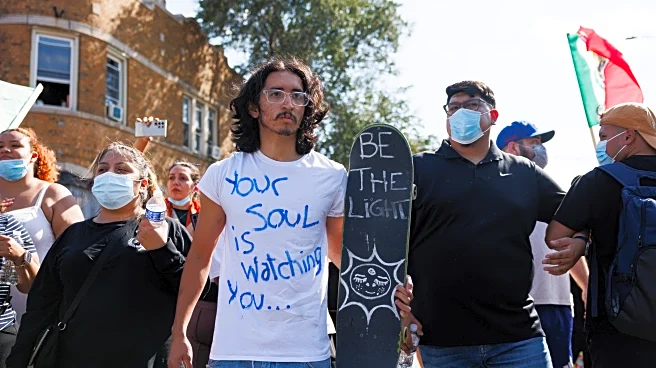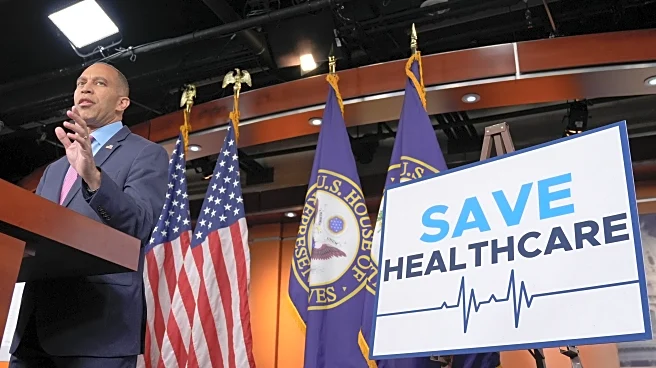What's Happening?
Thousands of residents in parts of Washington and Oregon have been advised to stay indoors due to potentially unhealthy air pollution levels. According to a live map from AirNow, a collaboration between the Environmental Protection Agency (EPA), National Oceanic and Atmospheric Administration (NOAA), and other agencies, air quality in these areas has deteriorated significantly. The EPA's data indicates that fine particle (PM2.5) pollution has reached the 'unhealthy' range, particularly around Wenatchee in Washington's Chelan County and a smaller area south of Portland, Oregon, including Mulino and Liberal. This situation poses heightened health risks for vulnerable groups such as older adults, children, and individuals with respiratory conditions. Official guidance suggests that these groups avoid prolonged or intense outdoor activities, and the general population is advised to take frequent breaks during outdoor activities.
Why It's Important?
The air quality alert underscores the ongoing challenges posed by environmental pollution and its impact on public health. Vulnerable populations, including children and the elderly, are at increased risk of health complications due to exposure to high levels of air pollution. This situation highlights the need for effective environmental policies and interventions to mitigate pollution sources and protect public health. The alert also serves as a reminder of the broader implications of air quality issues, which can affect economic activities, healthcare systems, and overall quality of life in affected regions. As climate change and industrial activities continue to influence air quality, such alerts may become more frequent, necessitating proactive measures from both government agencies and communities.
What's Next?
Residents in the affected areas are likely to experience continued advisories and updates from local health and environmental agencies. Authorities may implement additional measures to monitor and address the pollution sources contributing to the current air quality issues. Community awareness campaigns and public health advisories will be crucial in ensuring that residents, especially those in vulnerable groups, take necessary precautions. Long-term strategies may involve policy changes aimed at reducing emissions and improving air quality standards. Stakeholders, including environmental groups and policymakers, may push for more stringent regulations to prevent similar occurrences in the future.












